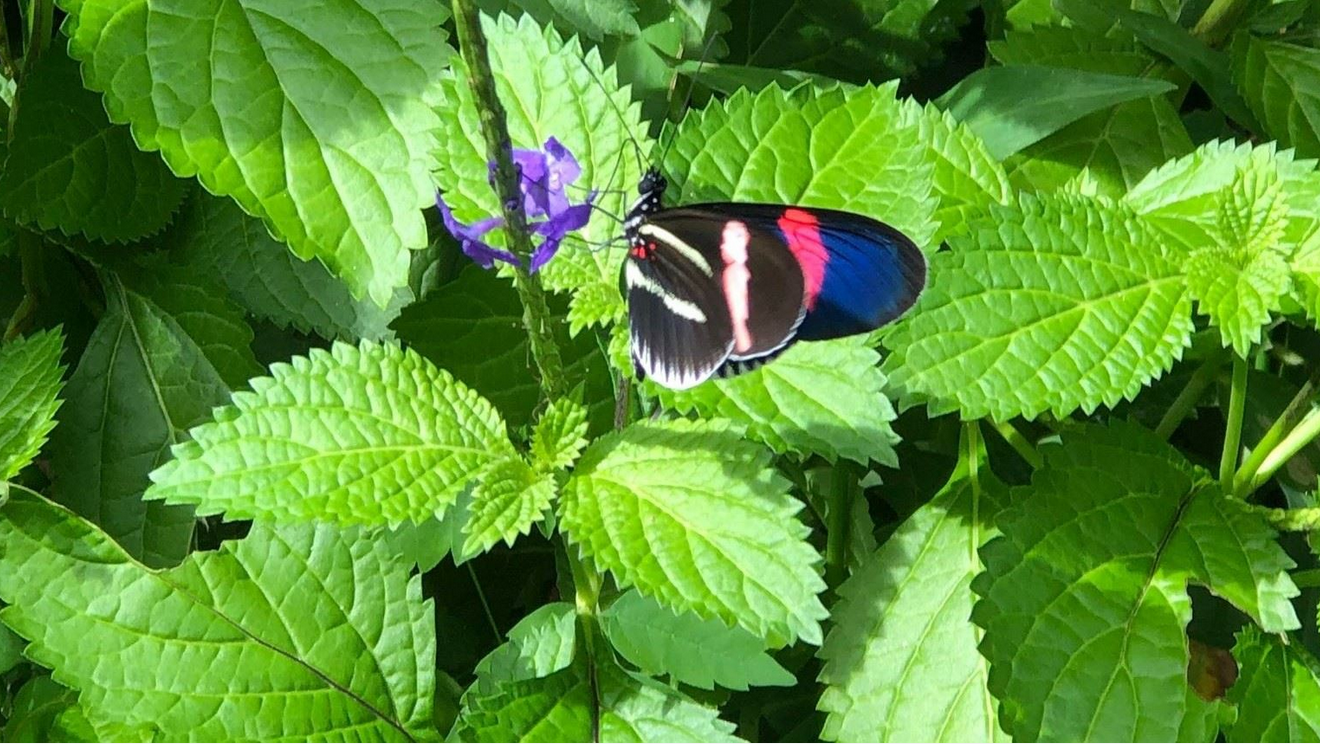Studying the evolution of the red postman.
Six invasive weeds that have serious negative impacts on agriculture and/or natural forest habitats in the Cook Islands have been identified as priority targets for biocontrol. A six-year programme which commenced in November 2013, with funding provided by the NZ Ministry of Foreign Affairs and Trade (MFAT), has enabled the release of six biocontrol agents (insects, mites and fungi) to better control these weeds in the Cook Islands.
The red postman butterfly, scientifically known as Heliconius erato cyrbia, was originally introduced into Rarotonga in 2016 as one of these biocontrol agents by Dr Quentin Paynter and colleagues at Landcare Research (NZ). This was to control red passion vine (Passiflora rubra), a vine that out-competes native plants, and can kill old trees by smothering them. It is one of 12 weeds that are “dominant invaders” in the Cook Islands and is one of a number of invasive weeds that has been blamed for the recent extinction of the native shrub Acalypha wilder, which was endemic to Rarotonga. Some other biocontrol agents have been released in Rarotonga to help control some of these invaders, including the balloon vine, African Tulip Tree, strawberry guava and mile a minute vine. Extensive testing and an Environmental Impact Assessment were done prior to releasing the butterflies to make sure they didn’t pose a threat to edible varieties of passionfruit and other plants and insects. Despite these tests, it is important to continue monitoring of the butterfly, as it adapts to its new surroundings.
Last week a researcher from Cambridge University in the UK was on the island to do some of this monitoring. Dr Gabriela Montejo-Kovacevich is studying evolution of the butterfly in the wild. Heliconius butterflies have been studied for hundreds of years in South America because of their striking warning colour patterns and interesting biology. They are Müllerian mimics, which means that they are toxic and copy each other’s colour patterns to help predators remember their nasty taste more easily. The Red Postman is native to the Western slopes of the Ecuadorian Andes and is iridescent blue. Like other Heliconius, it can live many months as adult butterflies because they feed on pollen.
The butterfly has now established and is controlling the growth of the red passion vine. Gabriela said she was lucky to find out about this biocontrol program as she was finishing her PhD on adaptation to altitude of these very butterflies. She got in touch with Quentin and they have been working together since 2019, studying the DNA of the butterfly. They have sequenced 150 individual butterfly genomes from three timepoints since the release, and are studying the population genetics of biocontrol and adaptation to the island environment. For instance, the fact that there are very few predators in the island and little competition for the red passion vine might change the evolutionary trajectory of the Ratotongan population . For Gabriela, this is a very exciting project as it provides a rare opportunity to study evolution as it happens in the wild and she hopes to continue monitoring the population in future.
The research is funded by the Genetics Society (UK) and the Varley-Gradwell Fellowship (University of Oxford)

